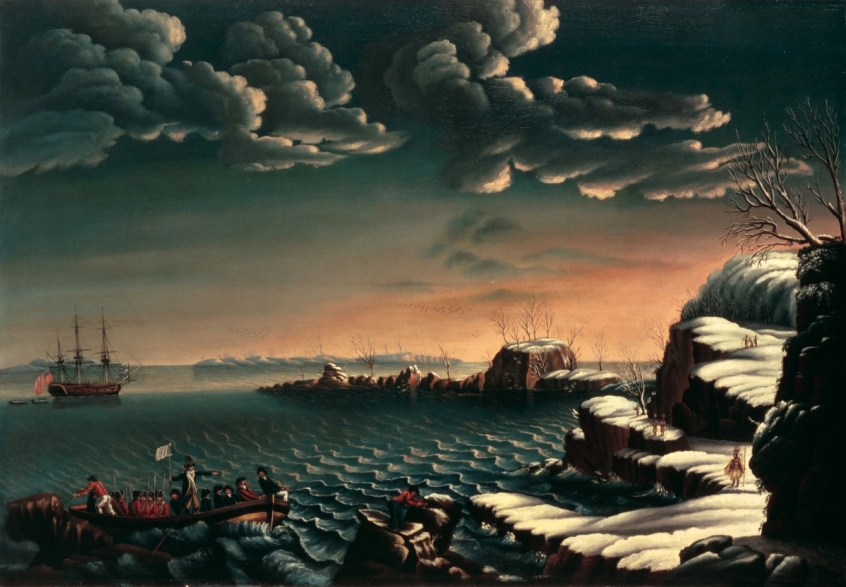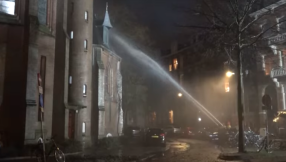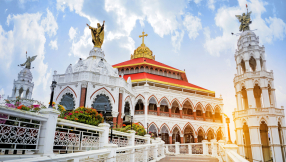
On this day in 1620, a voyage began that was to become a key part of the story of the founding of modern America.
The Pilgrim Fathers left Plymouth, on England's South Devon coast, aboard a merchant ship named the Mayflower, and headed for the New World. But who were they, why did they go and what happened when they got there?
1. They weren't all saints
But many of them were. The Pilgrims were among the English Protestants who had separated from the Church of England, which they believed was corrupt and idolatrous. Some of them became Baptists and Congregationalists. A group from Scrooby in Nottinghamshire settled in Leyden, Holland, where they found religious freedom, but decided to make a new life on the other side of the Atlantic. They called themselves 'saints', not pilgrims, and their group of about 40 was part of a larger group of 102 Mayflower passengers in all.
2. It was a hard time to be a Nonconformist
Religion was strictly controlled in England. You were fined for missing official Church of England services – a shilling for each Sunday and holy day, about £17 today. If you conducted unofficial services you could be fined even more or imprisoned. Loyalty to the Church was seen as part of your loyalty to the state. ome of the early Separatists were executed. One Scrooby member, William Bradford, wrote later that "some were taken & clapt up in prison, others had their houses besett & watcht night and day, & hardly escaped their hands; and ye most were faine to flie & leave their howses & habitations, and the means of their livelehood".
3. They didn't leave Holland to seek religious liberty
One of the myths around the Pilgrim Fathers is that they went to America to be free to worship as they wanted. But Holland was very relaxed about religion. A far bigger problem was that its merchants guilds controlled the professions and it was hard for foreigners to make a living. Also the easygoing atmosphere extended to morality, and the Separatists worried about their young people.
4. It wasn't all plain sailing
They managed to get permission from the King to establish a colony somewhere between the Chesapeake Bay and the mouth of the Hudson River. The Pilgrims and chartered two vessels, the Mayflower and the Speedwell, an old ship that had fought against the Spanish Armada. The Speedwell sprang a leak and only got as far as Plymouth, so the Mayflower departed alone, leaving around 20 passengers behind.
5. It was a horrible journey
Because of the delay caused by the Speedwell springing a leak, the crossing took place during the storm season. Many passengers were seasick. One young man – not one of the Pilgrims – was swept overboard and drowned. Bradford wrote that it served him right, for he was a "proud and very profane yonge man".
6. It got worse after they landed
They came ashore at Cape Cod, technically outside the area they had been allocated. To make their settlement as legitimate as possible they created the famous Mayflower Compact in which they swore allegiance to the King and promised to create a "civil Body Politick" governed by "just and equal laws". During the first winter, which they spent living aboard the ship, half the passengers and crew died of hunger and disease, including scurvy.
7. Their first building was a hospital
They explored up and down the coast, having one or two brushes with the native peoples, and eventually settled on a site vacated by the Wampanoag people after a smallpox outbreak; the disease was introduced by European traders. They were dreadfully weakened, but completed the first house in January 1621. It immediately became a hospital, and by the end of February another 31 Pilgrims had died.
8. They might all have died if they hadn't been helped
An English-speaking Pawtuxtet man named Samoset brokered an alliance with the local Wampanoag people, who taught them how to grow vegetables and hunt animals.
9. They invented Thanksgiving
Not strictly true, as there were plenty of thanksgiving traditions around already, including among English settlers in Maine and Virginia. But the three-day Thanksgiving festival at the end of their first summer is the ancestor of the modern American tradition – though for the Pilgrims it was a purely religious thanksgiving to God, while it is now a secular occasion.
10. They probably didn't land at Plymouth Rock
This is the traditional site and a tourist landmark, but William Bradford, who recorded the whole story, never mentions it.
Follow Mark Woods on Twitter: @RevMarkWoods













